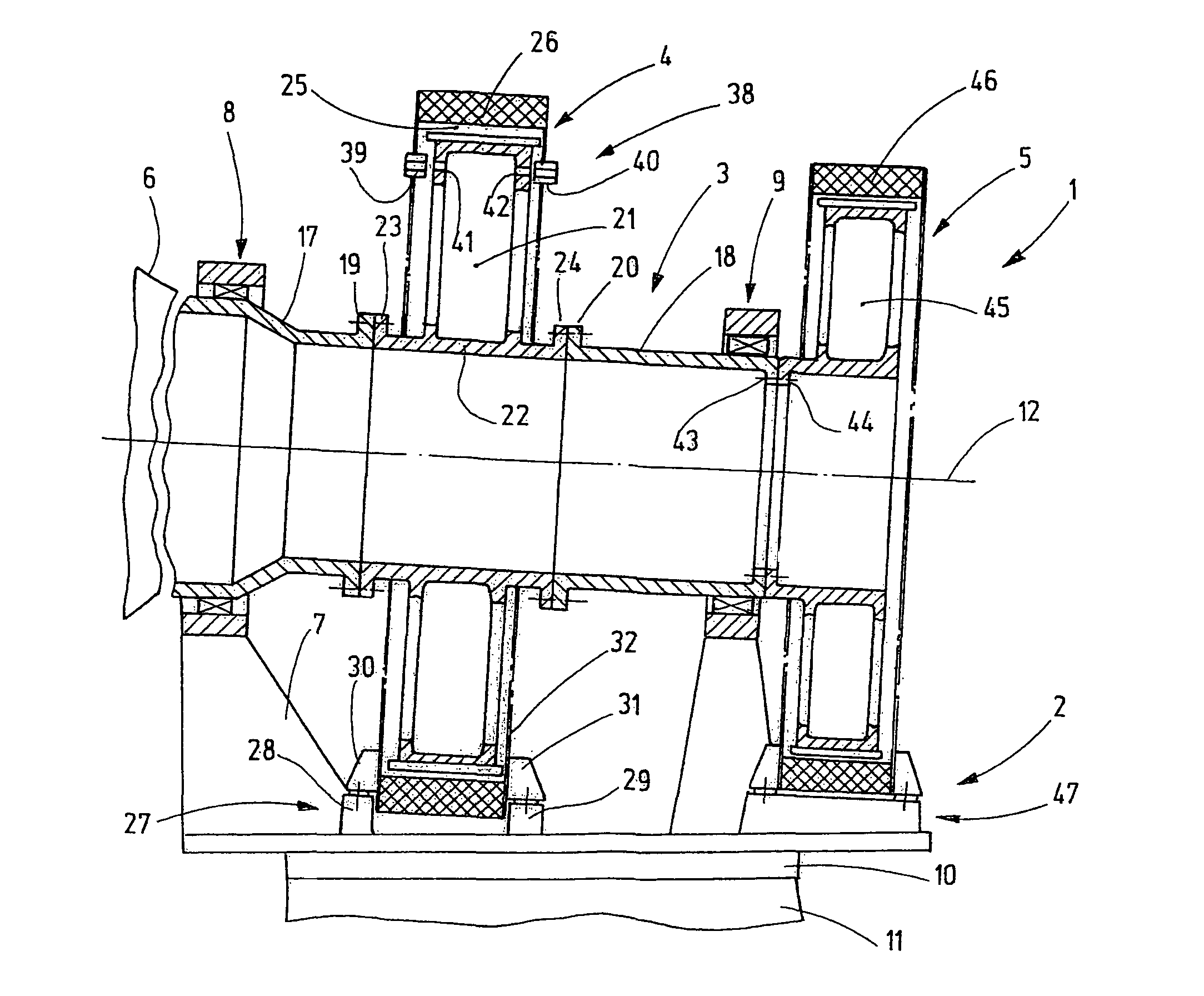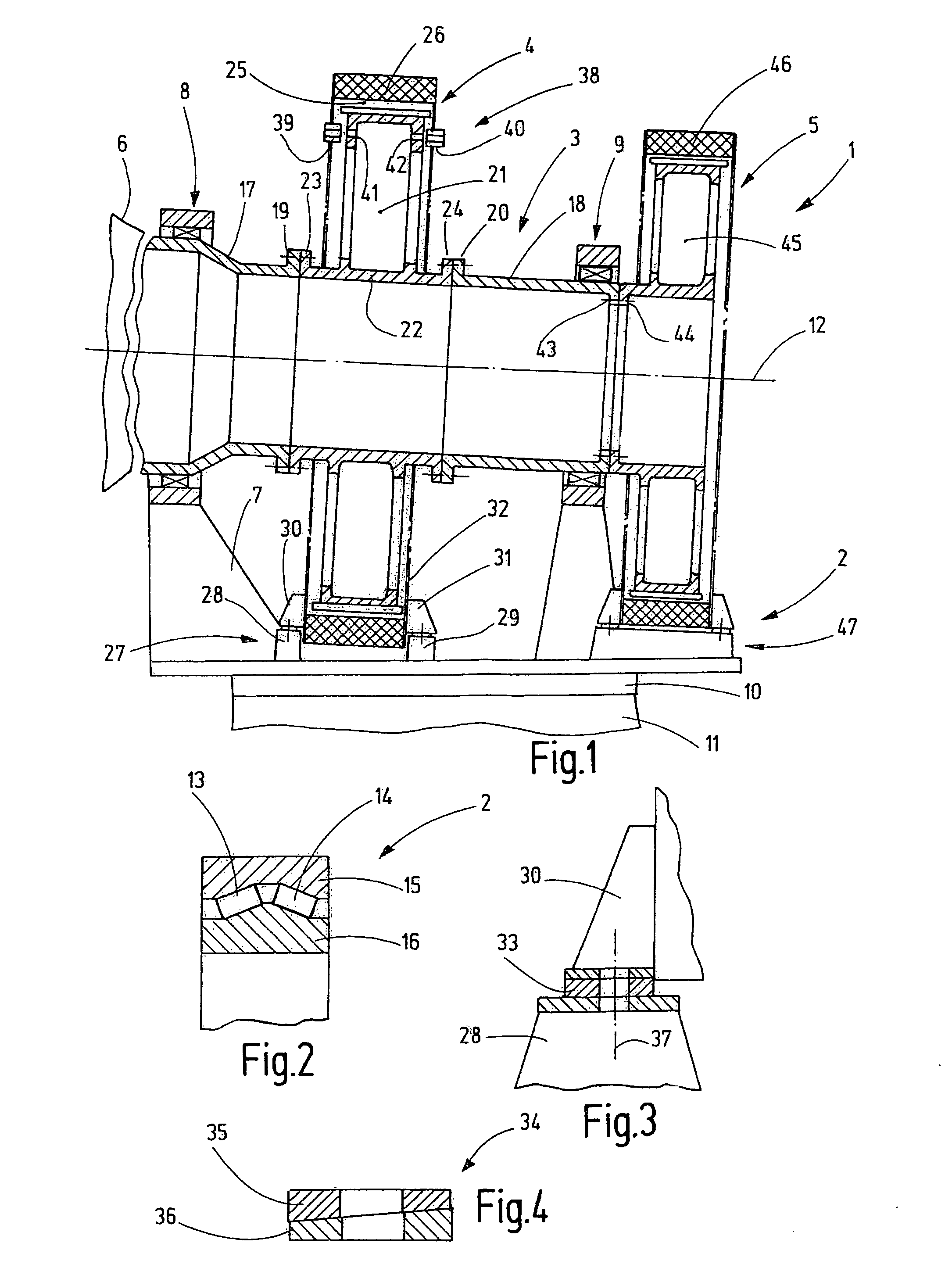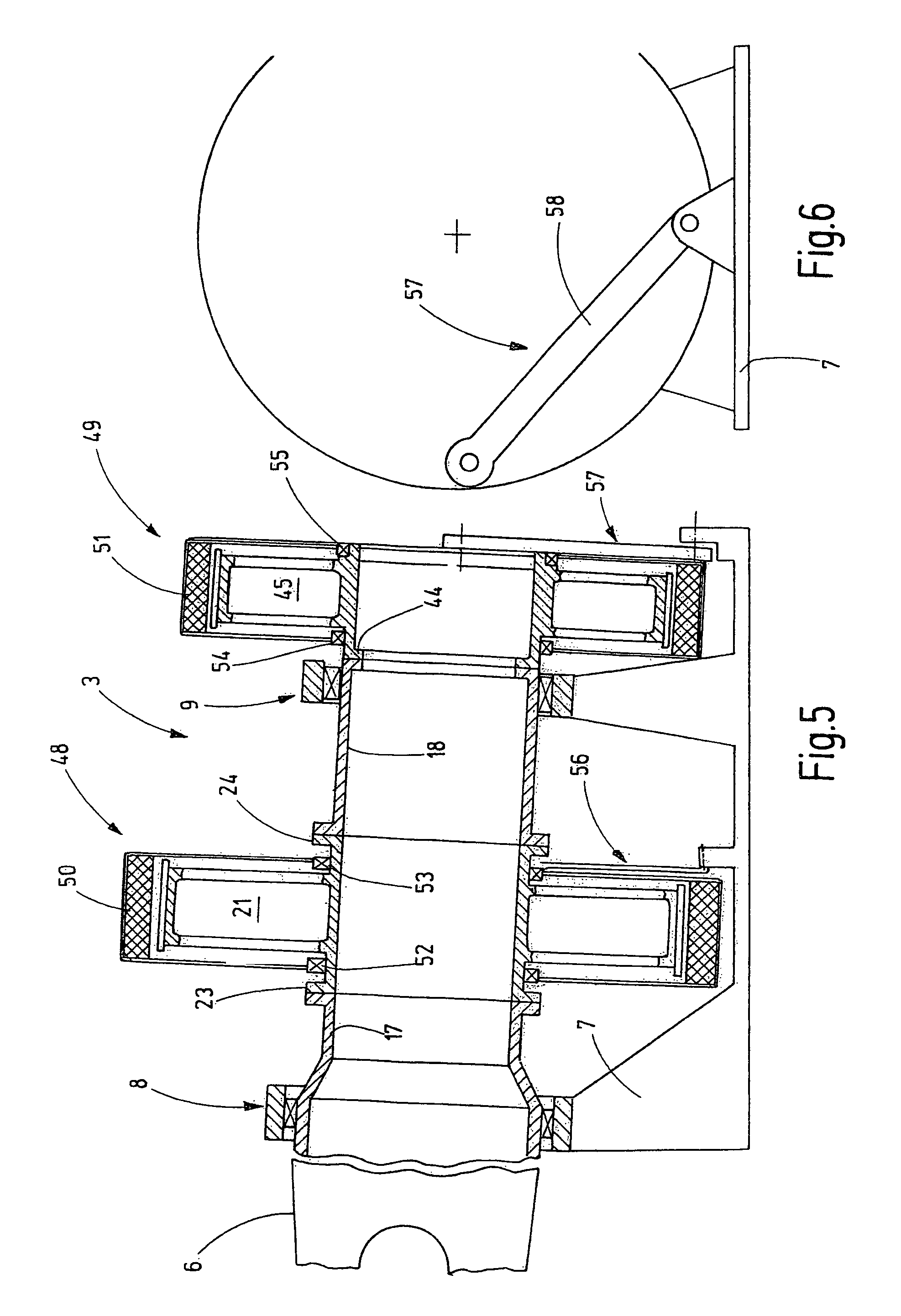Gondola with multi-part main shaft
a technology of gondola and main shaft, which is applied in the direction of mechanical equipment, machines/engines, electric generator control, etc., can solve the problems of manufacturing and transportation, and achieve the effects of improving the rotational rigidity of the shaft section, reducing material use, and improving the bending rigidity of the sha
- Summary
- Abstract
- Description
- Claims
- Application Information
AI Technical Summary
Benefits of technology
Problems solved by technology
Method used
Image
Examples
Embodiment Construction
[0024]FIG. 1 shows a gondola 2 of a wind power plant 1, including a main shaft 3 and generators 4, 5. The main shaft 3 carries at one end thereof a hub 6 which is shown only schematically and which is provided with rotor blades so as to be rotated by wind.
[0025]The gondola 2 comprises a gondola frame 7 on which at least two main bearings are supported, rotationally supporting the main shaft 3. The gondola 2 is supported on an upper end of a tower 11 via a gondola bearing 10. The gondola bearing 10 has a vertical axis of rotation. The main bearings define an axis of rotation 12 which extends essentially horizontally or at an acute angle with respect to a horizontal direction.
[0026]The two main bearings 8, 9 are mounted at a certain support distance from each other so that at least one of the two generators 4, 5 can be arranged between the two main bearings 8, 9 as it is shown in FIG. 1. The main bearings are only schematically shown in FIG. 1. Preferably they are fixed-loose bearings...
PUM
| Property | Measurement | Unit |
|---|---|---|
| electric energy | aaaaa | aaaaa |
| diameter | aaaaa | aaaaa |
| dimensions | aaaaa | aaaaa |
Abstract
Description
Claims
Application Information
 Login to View More
Login to View More - R&D
- Intellectual Property
- Life Sciences
- Materials
- Tech Scout
- Unparalleled Data Quality
- Higher Quality Content
- 60% Fewer Hallucinations
Browse by: Latest US Patents, China's latest patents, Technical Efficacy Thesaurus, Application Domain, Technology Topic, Popular Technical Reports.
© 2025 PatSnap. All rights reserved.Legal|Privacy policy|Modern Slavery Act Transparency Statement|Sitemap|About US| Contact US: help@patsnap.com



